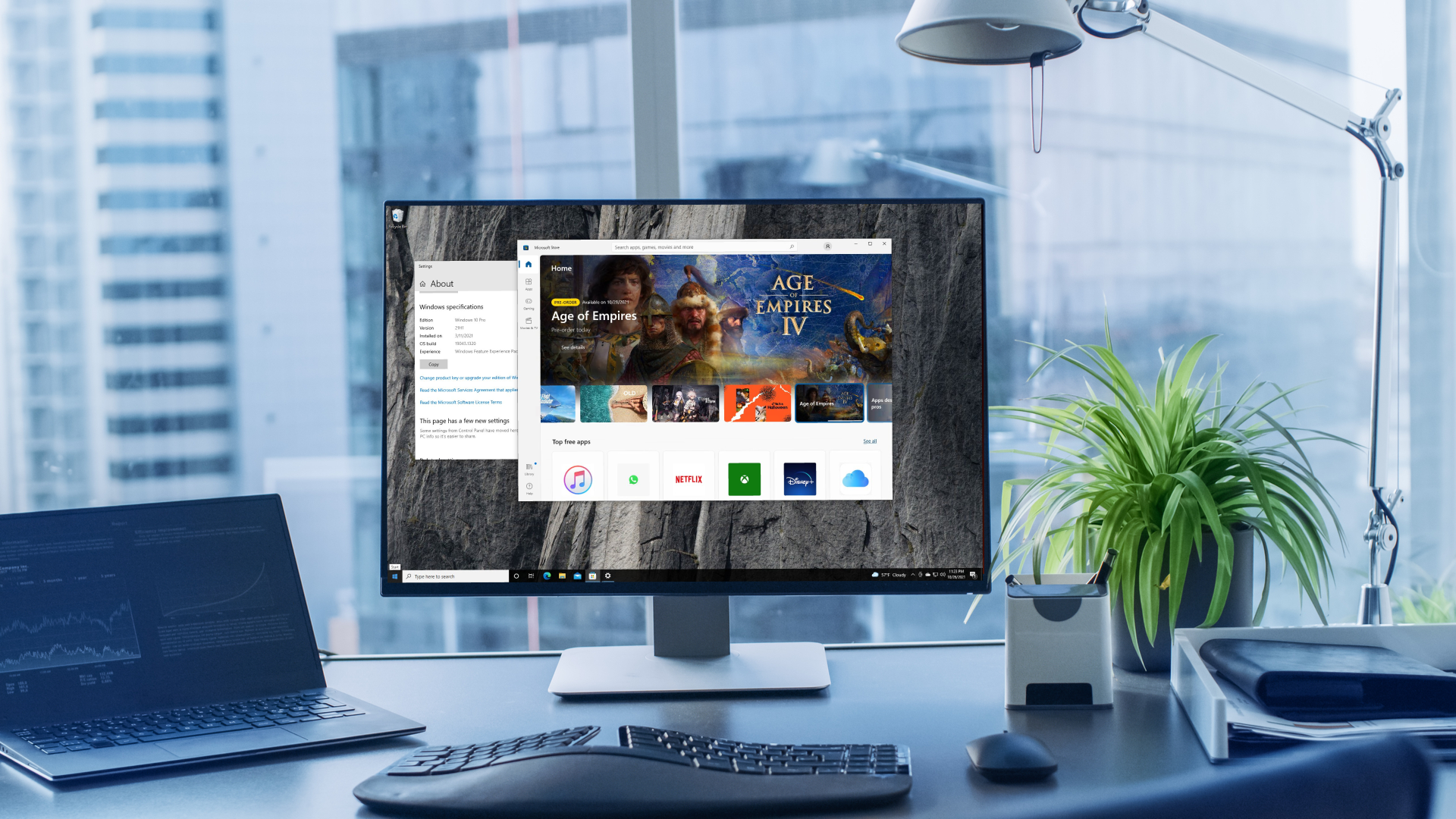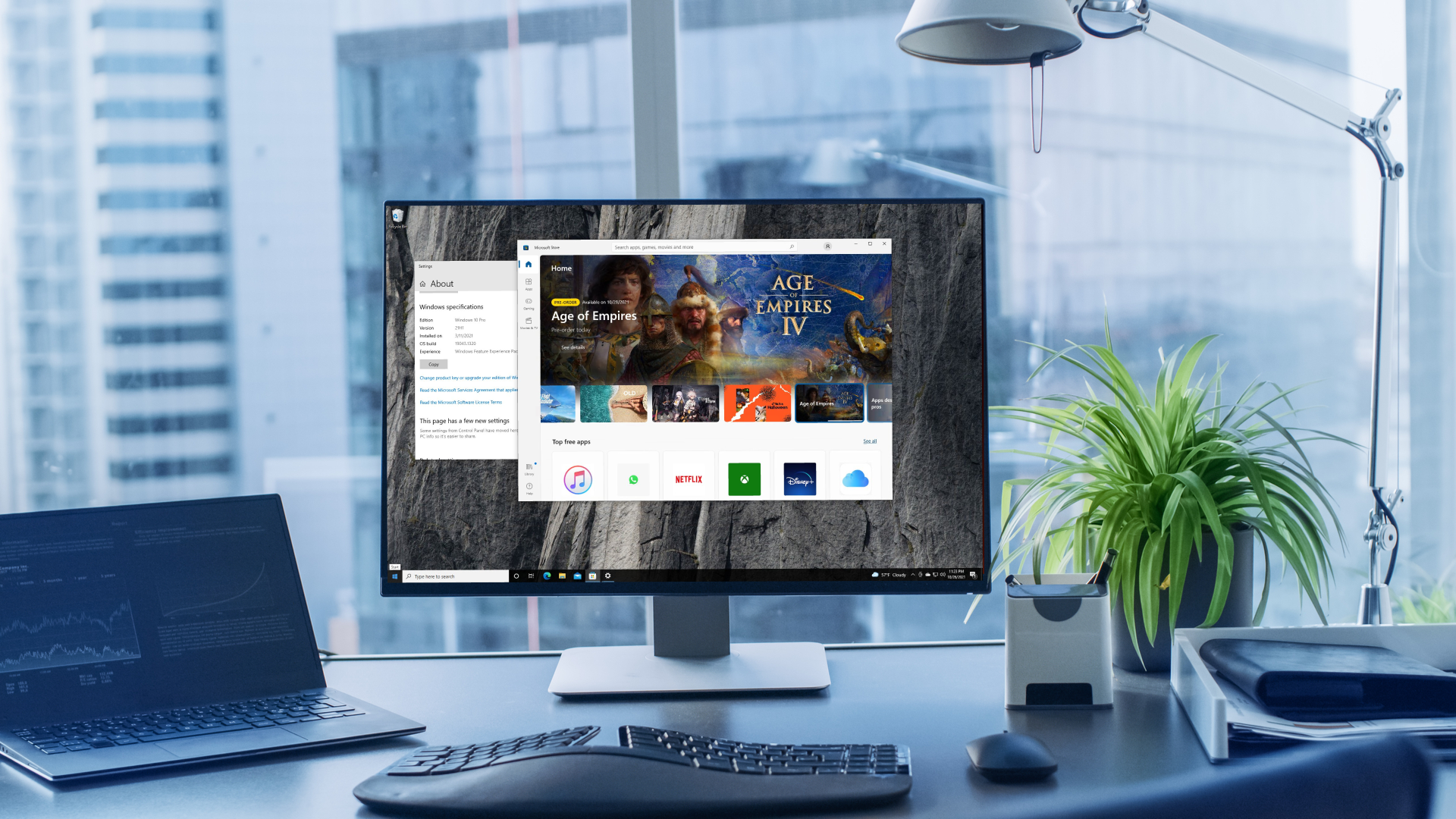- Windows 11 has finally overtaken Windows 10 for market share
- 52% of those using Microsoft’s desktop operating systems are now on Windows 11
- That’s a hefty swing of almost 10% away from Windows 10
At long last, Windows 11 is present on more PCs globally than Windows 10, at least according to one set of figures from an analytics firm.
StatCounter provided fresh statistics for July which show that Windows 11 has accelerated to account for 52% of all Windows versions worldwide, leaving Windows 10 in its wake on 44.59%.
That’s quite a shift from the previous month where Windows 10 remained just in the lead on 48.76% with Windows 11 on 47.98%. So, Windows 11 was not far off a full percentage point behind in June, but is now in the lead by 7.4%, a swing of near 10%.
You may like
Could this be the start of a mass exodus of Windows 10 stalwarts fleeing for the shores of Windows 11? Well, that can’t be ruled out, and it’s clear that time is running short when it comes to the looming deadline for the end of support for Windows 10, which is October 2025 – which is only three months away now.
However, I’m not convinced that there will be a stampede of migrators, because while I’ve argued in the past that you should be making the upgrade to Windows 11 early – assuming you can (due to your PC’s spec) – there’s no longer quite the same sense of urgency in this matter.
Why not? Let’s go over that next.
Analysis: Support and scrapheaps

Something changed with Windows 10’s extended support program for consumers recently, and it’s worth recapping in case you missed it. Microsoft decided to offer an alternative to the $30 fee that was previously required to get an extra year of security updates for Windows 10 (through to October 2026).
So, instead of stumping up that cash, you can now elect to have the Windows Backup app sync all your PC’s settings to the cloud. If you allow that to happen – via signing in with a Microsoft Account – then you can get the extra year of all-important security updates at no cost. This gives you a lot more breathing space to work out what you might want to do next, which is great for those who can’t upgrade to Windows 11 due to its loftier system requirements (or those who simply refuse).
Of course, ‘free’ is not usually completely free, and the cost here, as it were, is allowing your settings to be synced. Due to this, some online commenters have accused Microsoft of almost a kind of ‘blackmail’ in terms of getting access to your data. However, I should note that the wording of Microsoft’s offer is important here, and you’re not syncing all your personal data to OneDrive or anything – all you have to sync are your Windows settings.
And having those settings synced should help in the future, too, if you want to make the transition to Windows 11 (or the following version of Windows) at a later date on a new PC. Microsoft’s hope, it seems, is this will make that transition easier, and so folks are therefore more likely to tread that path.
I don’t think there’s any underlying motive from Microsoft here to get its claws into your personal data as some are suggesting, so in my book, this all seems fair enough. If you’re not convinced, however, that’s equally fair – you don’t have to take Microsoft up on this option. You can pay instead (or redeem 1,000 Microsoft Rewards points, if you have them, which is another alternative), or just go ahead and switch from Windows 10 come its End of Life in October 2025.
Whatever you do, don’t stay on Windows 10 without security updates – never mind worrying about Microsoft’s nose potentially being in your data, a hacker could really make your life a misery by compromising your PC due to an unpatched vulnerability because your system doesn’t have security updates.
Taking a broader perspective, I’ve half-convinced myself that Microsoft may even offer more than a year of additional support to consumers (in the same way it treats businesses).
Mainly because this new Windows Backup-related offer has come in at the last minute, largely I suspect to assuage some of the fears of the ‘towering scrapheap of Windows 10 PCs‘ activists who are (rightly) concerned about the environmental impact of Microsoft’s Windows 11 system requirements. (Those that prevent a lot of would-be upgraders from moving to the newer OS, due to having an older CPU, or the lack of a specific security feature, TPM 2.0).
And so I don’t think it’s unimaginable that Microsoft might offer a second year of extended support for consumers, and I very firmly believe the company should do so. We shall see, but for now, with an extra year of support on the table for free (effectively), there’s no need to rush to abandon Windows 10 for many folks. Not unless your trust in Microsoft is particularly low, or you don’t have a Microsoft account and don’t want to sign up for one (to sync your settings).
There are, of course, other options aside from Windows – the main one being a switch to Linux. Of course, in that case, you need to be prepared to leave Microsoft’s ecosystem and put up with some of the limitations that one of the best Linux distros will come with (mainly around compatible software, particularly PC games).
Meanwhile, we can expect further spikes in adoption for Windows 11 in the near future, although perhaps not to the same extent that some people might expect, given those extra choices Microsoft has just introduced.
You might also like…
Services Marketplace – Listings, Bookings & Reviews
